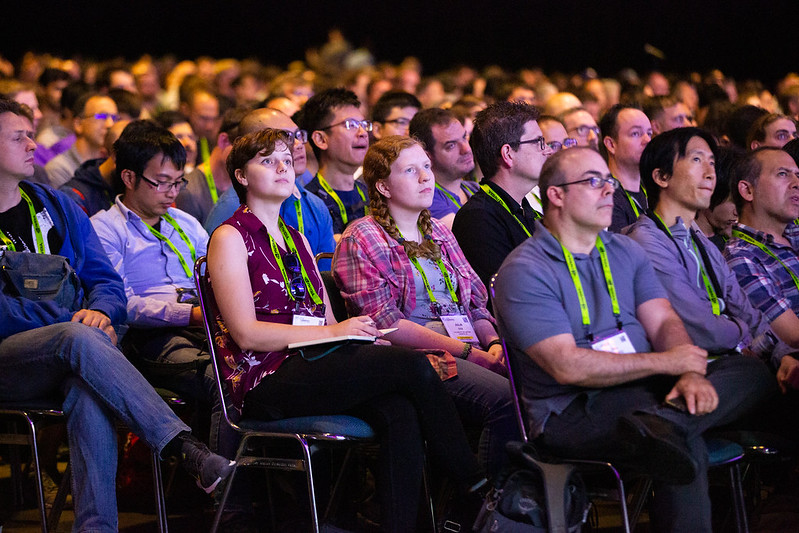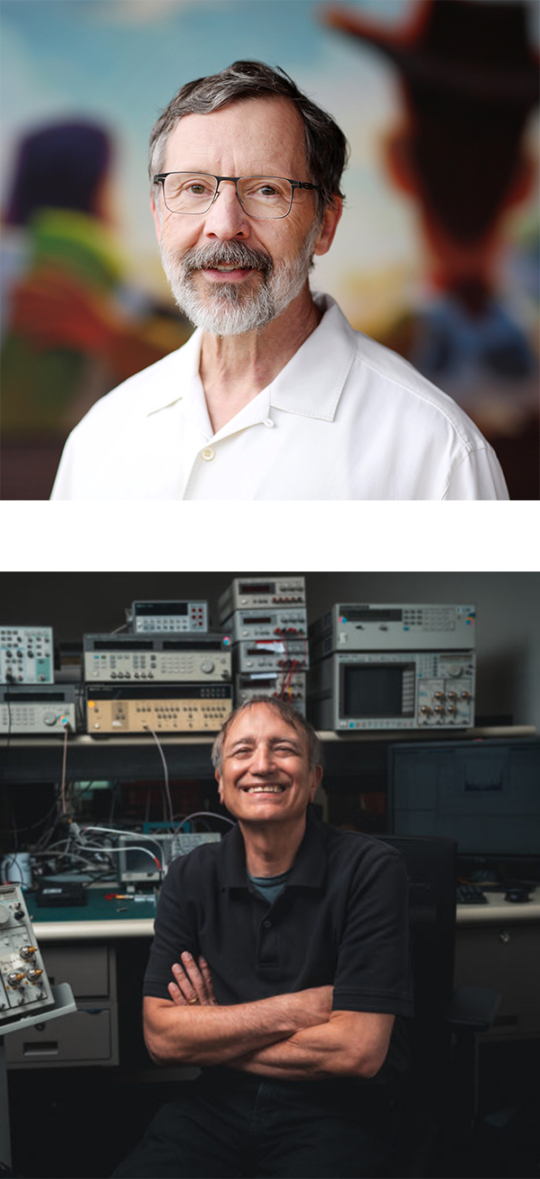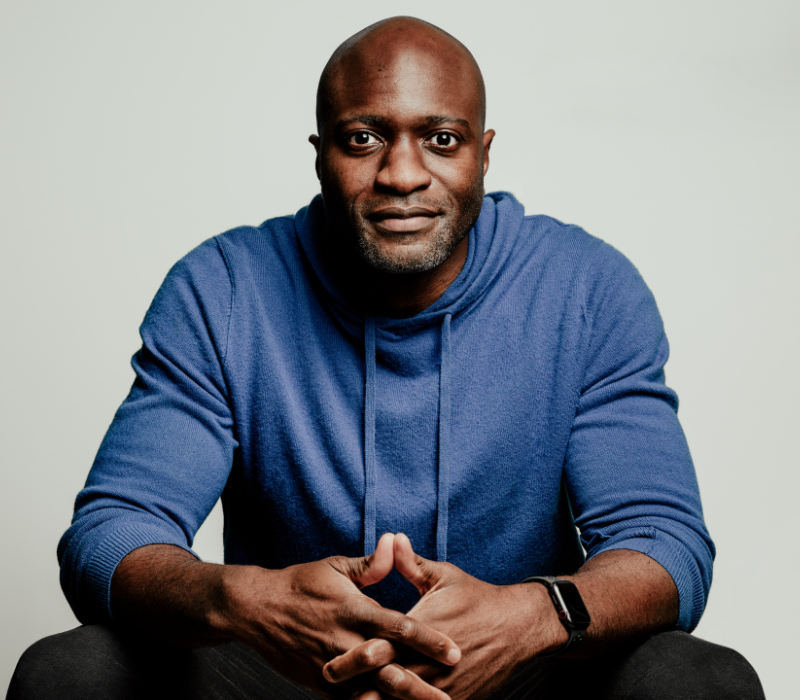Welcome to SIGGRAPH 2022
Featured Speakers
SIGGRAPH 2022 presents Featured Speaker sessions, where industry experts discuss some of the most prominent topics in computer graphics and interactive techniques. Get to know the speakers below.


Seeing Double — Bridging Dualities With Relational Intelligence
SOUGWEN 愫君 CHUNG
Where does “AI” end and “we” begin? Artist and researcher Sougwen Chung’s ever-evolving work in human and machine collaboration builds upon a decade-long international journey. Starting with a simple line, the process has led to interdisciplinary insights, philosophical inquiry, and technological invention through pioneering artistic practice. Intertwining perspectives in art and science, Chung’s practice envisions alternative futures for the relationship of humans and machines. “Embracing contradictions in art and research can pave the way to a third path, inspired by tradition and the development of new hybridities,” Chung says.
Sougwen 愫君 Chung is a Chinese-Canadian artist and (re)searcher based in London. Chung’s work explores the mark-made-by-hand and the mark-made-by-machine as an approach to understanding the dynamics of humans and systems. Chung is a former research fellow at MIT’s Media Lab and a pioneer in the field of human-machine collaboration. In 2019, she was selected as the Woman of the Year in Monaco for achievement in the arts and sciences.

Turing Award Lectures
ED CATMULL AND
PAT HANRAHAN
ACM A.M. Turing Award winners Ed Catmull and Pat Hanrahan return to the SIGGRAPH stage for a combined session discussing the history and advancements of the computer graphics industry.
In “Shading Languages and the Emergence of Programmable Graphics Systems,” Hanrahan charts the path of shading languages; first pioneered by Ken Perlin and Rob Cook, then becoming widely available in Pixar’s RenderMan. Early graphics and imaging hardware such as the Ikonas was also programmable. Nowadays, programmable GPUs are the faster computers in the world. This talk will review their history and discuss the broader implications for computing and the future of computer graphics.
In “The Wild, Unexpected, Exponential Ride Through Computer Graphics,” Catmull tells a brief tale of the early belief in the promise of computer graphics, including its early support by DARPA at Utah, the depiction of the research in graphics as impractical, the incorporation of graphics in workstations, the role of the SIGGRAPH community leading to advances enabling movies, the incorporation of algorithms in GPUs, and the exponential rise of computing power in those GPUs driven by the Game Industry leading to completely unexpected results.
Pat Hanrahan is the Canon Professor of Computer Science and Electrical Engineering in the Computer Graphics Laboratory at Stanford University. His research focuses on rendering algorithms, graphics processing units, and visualization. Hanrahan received a Ph.D. in biophysics from the University of Wisconsin-Madison in 1985. In 1989, he joined the faculty of Princeton University. In 1995, he moved to Stanford University. As a founding employee at Pixar Animation Studios in the 1980s, Hanrahan was part of the design of the RenderMan Interface Specification and the RenderMan Shading Language. More recently, Hanrahan served as a co-founder and CTO of Tableau Software. He has received three Academy Awards for Science and Technology, the SIGGRAPH Computer Graphics Achievement Award, the SIGGRAPH Stephen A. Coons Award, and the IEEE Visualization Career Award. He is a member of the National Academy of Engineering and the American Academy of Arts and Sciences. In 2019, he received the ACM A. M. Turing Award.
Dr. Ed Catmull is a co-founder of Pixar Animation Studios and served as president of Pixar for 33 years, while also serving as president of Walt Disney Animation Studios for 13 of those 33 years. Catmull’s New York Times best-selling book “Creativity, Inc.: Overcoming the Unseen Forces That Stand in the Way of True Inspiration” published in 2014. Catmull is an ACM Turing Award Laureate, and he has been honored with five Academy Awards, including two Oscars and a Lifetime Achievement Award. Catmull founded three of the leading centers of computer graphics research — including the computer division of Lucasfilm Ltd. and Pixar Animation Studios. Catmull has been a dedicated ACM SIGGRAPH participant for nearly 40 years. He is a member of the Academy of Motion Picture Arts and Sciences, the National Academy of Engineering, and the Visual Effects Society. Catmull earned B.S. degrees in physics and computer science and a Ph.D. in computer science from the University of Utah. In addition, he has received honorary doctorates from the University of Utah and Johns Hopkins University. In 2019, he retired as president of Pixar and Disney Animation and is active in writing and speaking.

Who Is Going to Design the Next Wave of Innovation? You Are. A Chat With Meta’s Head of New Product Experimentation
IME ARCHIBONG
Join Ime Archibong, head of Meta’s New Product Experimentation (NPE), to hear about how you can — and should — help design the future, including the metaverse. In this fireside chat, Ime will talk about experimentation as an approach to innovation, share some examples of innovative ways people with a design mindset from around the world are more empowered than ever to build, and why it’s so important that designers of all expertise help make the next era a reality.
Ime Archibong is Head of New Product Experimentation (NPE) at Meta, where he leads the unit testing new product experiences outside of Meta’s main platforms.
Previously, Ime was Facebook’s Vice President of Product Partnerships, where he built the global team that manages strategic partnerships with startups and developers. His career began at IBM as a software engineer, where he then transitioned to corporate strategy and business development.
He holds a Bachelor’s of Science degree in Electrical Engineering and Computer Science from Yale University, where he was Captain of the Varsity Basketball team, and also received an MBA from the Stanford Graduate School of Business, where he served as class president. He is a listed inventor on more than a dozen technical patents, and serves on Capital One’s corporate board, as well as many nonprofits focused on empowering underserved youth, students, and entrepreneurs.

How Digital Worlds Today Can Make the Real World Better Tomorrow
SARAH BOND
Now more than ever, people are experiencing the world through their screens. Games have a unique ability to break barriers, spark imagination, and create empathy. Gaming is the only activity where strangers can come together and work as a team to achieve a goal, even if they don’t speak the same language, have never met, live in a different part of the world, or have different abilities. All of this is thanks to incredible creators who craft these amazing worlds. As 3D interactive experiences evolve from gaming to non-gaming, we will see an explosion of fresh content from a wave of new creators – and working together, we can intentionally create those worlds to be more inclusive and fuel the empathy that will help us build a better world together.
Sarah Bond (she/her) is the Corporate Vice President, Game Creator Experience and Ecosystem at Xbox. Sarah’s Gaming Ecosystem Organization is dedicated to delighting gamers and empowering creators to unlock their creativity using Microsoft’s software and services from Xbox to Azure. In this role, Sarah leads the company’s engineering, business and strategy to grow creator success, helping them create and publish more games and reach more players on any device. As the former CVP of Global Gaming Partnerships and Development, Sarah was instrumental to the growth of Xbox and foundational to the success of Xbox Game Pass.
Sarah sits on the Board of Councilors at the USC School of Cinematic Arts, as well as the Board of Directors at the Entertainment Software Association (ESA), Zuora, the leading subscription management platform and CHEGG, a leading student-first connected learning platform. Sarah holds a BA in Economics from Yale University and an MBA from Harvard Business School.

PRESENTED BY AMD: THE COLLISION OF TECHNOLOGY AND ART
JAMES KNIGHT,
DYLAN SISSON,
LEIF PEDERSEN,
Francois Chardavoine
Pixar’s Dylan Sisson (artist, designer, and marketing head), RenderMan’s Leif Pedersen (technical marketing), AMD’s James Knight (global director, media and entertainment/visual effects), and Lucasfilm’s Francois Chardavoine (chief technology officer) will discuss how technology and art push each other to benefit great storytelling. Using examples of how some of the world’s best creatives leverage advanced computing, giving artists more time with their pixels, Dylan, Leif, and James will explore how the creative sandbox is bigger and deeper than ever before.
James Knight is the global director of media and entertainment at AMD (Advanced Micro Devices), where he supports video streaming, VFX, virtual production, and post-production computing applications for the largest media brands, studios, and content streaming platforms in the world. Knight’s work spans two decades in production, post-production, real-time visual effects, and virtual production. He is a member of the Visual Effects Society (VES), past board member of the British Academy of Los Angeles (BAFTA-LA), and a member of the Academy of Motion Picture Arts and Sciences (AMPAS).
Dylan Sisson, marketing manager, Pixar Animation Studios, is an accomplished artist with more than 20 years of experience in feature film visual effects, combining a deep knowledge of computer graphics with a traditional background of painting, illustration, and toy design. Sisson brings a unique artistic style and a record of creative leadership to a diverse portfolio of work.
With over 15 years of production experience, Leif Pedersen is a RenderMan specialist and CG generalist at Pixar’s RenderMan team, where he loves to showcase some of the most artistic and technical aspects of the renderer.
As chief technology officer, Francois Chardavoine is responsible for all aspects of global studio technology for Lucasfilm, Industrial Light & Magic, and ILMxLAB. With over 20 years experience in the VFX and animation industry, Francois is also a member of the VES Technology Committee and co-chair of the Academy of Motion Picture’s Science and Technology Awards Sub-Committee.

Presented by NVIDIA: NVIDIA Special Address at SIGGRAPH 2022
Jensen Huang, Rev Lebaredian, Sanja Fidler, Simon Yuen, Steven Parker
Computer graphics is one of the most challenging computer science problems of our time. With GPU accelerated computing, AI, and physically accurate virtual world simulation, NVIDIA continues to deliver generational leaps to advancing the field of graphics. We are now at a critical evolution — where 3D worlds are no longer just for fun and games but for solving the world’s most challenging important problems. Join NVIDIA’s CEO and senior leaders for a special address at SIGGRAPH 2022 to get a glimpse into the future of AI-infused virtual worlds that provide new frontiers for artistic expression and creativity, or perfectly replicate nature’s systems — and the research and technology that power them.
Jensen Huang founded NVIDIA in 1993 and has served since its inception as president, chief executive officer, and a member of the board of directors. Starting out in PC graphics, NVIDIA helped build the gaming market into the largest entertainment industry in the world today. The company’s invention of the GPU in 1999 made possible real-time programmable shading, which defines modern computer graphics, and later revolutionized parallel computing. More recently, GPU deep learning ignited modern AI — the next era of computing — with the GPU acting as the brain of computers, robots, and self-driving cars that can perceive and understand the world. Huang has received the Dr. Morris Chang Exemplary Leadership Award and honorary doctorate degrees from Taiwan’s National Chiao Tung University and Oregon State University. In 2019, Harvard Business Review ranked him No. 1 on its list of the world’s 100 best-performing CEOs over the lifetime of their tenure. In 2017, he was named Fortune’s Businessperson of the Year. Prior to founding NVIDIA, Huang worked at LSI Logic and Advanced Micro Devices. He holds a B.S. in electrical engineering from Oregon State University and an M.S. in electrical engineering from Stanford University in California.
Rev Lebaredian is vice president of Omniverse and simulation technology at NVIDIA. From the dawn of the computer graphics revolution to the present day, Lebaredian has always been at its cutting edge. His career has taken him from Warner Brothers Digital and Disney Dream Quest Images to starting his own venture, Steamboat Software. For the last five years at NVIDIA, he and his teams have been combining the rendering, physics simulation, and artificial intelligence technologies pioneered by NVIDIA into a single platform for creating and simulating physically accurate virtual worlds — NVIDIA Omniverse. Lebaredian continues to lead the Omniverse product, engineering, and research teams as vice president of Omniverse and simulation technology.
Sanja Fidler is an associate professor at the Department of Computer Science, University of Toronto, Ontario, which she joined in 2014. Fidler is also the vice president of AI research at NVIDIA. Previously, she was a research assistant professor at TTI-Chicago, a philanthropically endowed academic institute located on the campus of the University of Chicago, Illinois.
Simon Yuen is senior director of avatar technology at NVIDIA where he leads the digital human efforts with the goal of developing new character technology and deep learning-based solutions that allow new and more efficient ways of creating high-quality digital characters. Prior to NVIDIA, Yuen spent over 21 years in the visual effects industry, straddling both the art and technology sides of the problem at many studios including Method Studios, Digital Domain, Sony Pictures Imageworks, Dreamworks, Blizzard Entertainment, and others, building teams and technologies that push the envelope of photorealistic digital character creation.
Dr. Steven Parker is vice president of professional graphics at NVIDIA Corporation, where he holds responsibility for several ray tracing technologies, including NVIDIA RTX™ drivers and APIs such as NVIDIA OptiX™, the RTX™ rendering systems in NVIDIA Omniverse™, the Material Definition Language, and the NVIDIA IndeX® scientific visualization system. Combining a history of ray tracing, rendering, and high-performance computing, Parker has been focused on bringing physically based rendering systems to interactive applications.

Presented by Hexagon AB: Even Better Than the Real Thing: Worldbuilding With Digital Twins and AI
Burkhard Boeckem
A world constrained by time and distance has come to an end. Join Burkhard Boeckem, chief technology officer at Hexagon AB, as he unveils a new category of digital reality technologies that fundamentally change how we think about worldbuilding, design, and production. Burkhard’s passion is the democratization of digital realities, which led to Hexagon’s development of the Leica BLK line of laser scanners, the launch of HxDR, a powerful visualization and collaboration platform, and recently led to the acquisition of Immersal, an AR technology for spatial mapping and anchoring. You’re invited to enter into the advanced world where together we can create a one-to-one digital map of almost unimaginable scope — every place, every object, every process autonomous, connected, and in real time. Discover the massive potential digital realities hold for worldbuilding, visualization, and immersive storytelling — from VFX to AEC, from metaverse to virtual production — in a world where your ideas know no constraints.
Burkhard Boeckem is the CTO of Hexagon AB and has worked in the geospatial industry for over 20 years. As CTO, he is responsible for driving innovation and development of Hexagon’s autonomous technology vision. Throughout his career, he has focused on R&D, delivering innovation in digital reality and working with the latest advances in disruptive technologies, such as AI and 5D visualization. Burkhard’s aim is to democratize technology and make complex solutions and workflows available to a broader set of sectors and users. He’s led the team that brought to life the Leica BLK series, including the award-winning Leica BLK360 imaging laser scanner which is currently being used by companies all over the world and in industries as diverse as retail and architecture, engineering, and construction to media and entertainment. Boeckem holds a master of science in geodesy from the University of Bonn in Germany and a PhD from the Swiss Federal Institute of Technology (ETH Zurich), where he was awarded the ETH Medal for his thesis in geodesy and applied physics.

Presented by Unity: Lion: A Glimpse of the Future With Unity Art Tools
James Jacobs, Sara Hansen, Anton Blake, Julio Cesar Garcia
Join us to watch the premiere of Unity’s latest demo, Lion. This production features innovations in real-time technology that shows content created with Ziva, Wētā Digital, SyncSketch, SpeedTree, and the Unity Editor artist tools. Lion showcases plans to help artists create boundary-pushing visuals, as well as foundations for richer creator workflows.
James Jacobs is a Sci-Tech Academy Award-winning VFX artist with over 25 years of expertise. He has held leadership positions at Weta Digital, Digital Domain, DreamWorks, Mr. X, and Method Studios. In 2015, James cofounded Ziva Dynamics, a company dedicated to solving challenging and high-value character obstacles in media and entertainment. At Unity, he leads the continued development of Ziva tools and finds new ways to bring the realism and quality of film characters into the game/real-time industry.
Anton Blake has been a professional animator for 13 years, having worked in film, TV, and game industries. After contributing to The Lion King, he chose to explore teaching and mentorship, starting with a tutorial based on the cubs from the film. The popularity of this tutorial motivated Anton to create entire animation workshops, eventually leading to Monster Emporium. He now works at MPC during the day and runs the Monster Emporium school at night.
Julio Cesar Garcia is a VFX pipeline developer who enjoys mixing technology and art. He is currently working at Rocket Science VFX in Toronto. Julio’s strong passion for animal behavior led him to apply his knowledge to creature animation and simulation. In 2020, he joined Monster Emporium as pipeline developer and creature TD, where he develops new technologies and improves creature assets.

